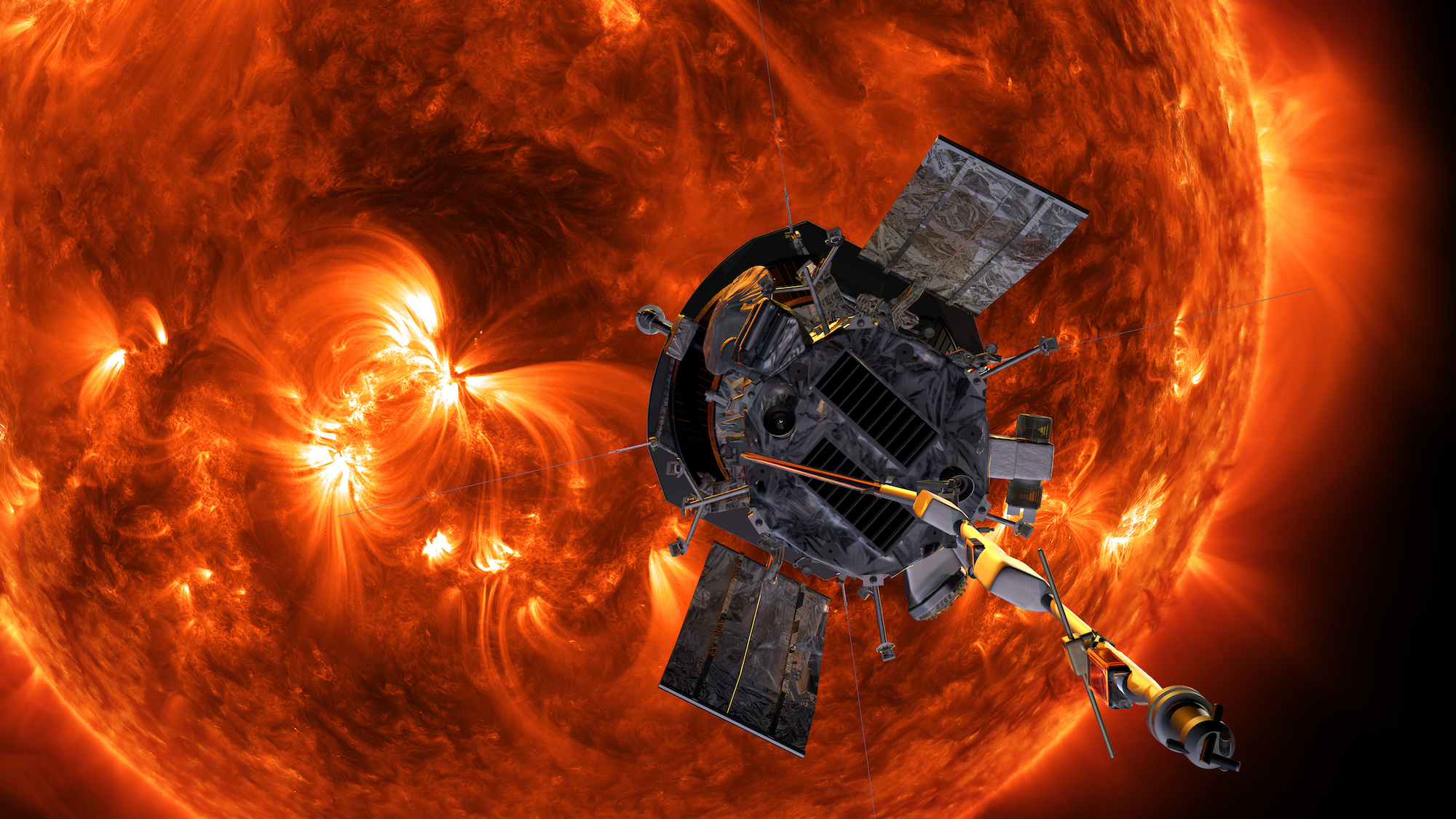

The 2018 winner of PopSci’s annual Best of What’s New continues to impress. NASA’s Parker Solar Probe is still edging closer to the sun than any other spacecraft has ever achieved, and it’s setting new speed records in the process. According to a recent status update from the space agency, the Parker Solar Probe has broken its own record (again) for the fastest thing ever made by human hands—at an astounding clip of 394,736 mph.
The newest milestone comes thanks to a previous gravity-assist flyby from Venus, and occurred on September 27 at the midway point of the probe’s 17th “solar encounter” that lasted until October 3. As ScienceAlert also noted on October 9, the Parker Solar Probe’s speed would hypothetically allow an airplane to circumnavigate Earth about 15 times per hour, or skip between New York City and Los Angeles in barely 20 seconds. Not that any passengers could survive such a journey, but it remains impressive.
[Related: The fastest human-made object vaporizes space dust on contact.]
The latest pass-by also set its newest record for proximity, at just 4.51 million miles from the sun’s plasma “surface.” In order not to vaporize from temperatures as high as nearly 2,500 degrees Fahrenheit, the Parker Solar Probe is outfitted with a 4.5-inch-thick carbon-composite shield to protect its sensitive instruments. These tools are measuring and imaging the sun’s surface to further researchers’ understanding of solar winds’ origins and evolution, as well as helping to forecast environmental changes in space that could affect life back on Earth. Last month, for example, the probe raced through one of the most intense coronal mass ejections (CMEs) ever observed. In doing so, the craft helped prove a two-decade-old theory that CMEs interact with interplanetary dust, which will improve experts’ abilities in space weather forecasting.
Despite its punishing journey, NASA reports the Parker Solar Probe remains in good health with “all systems operating normally.” Despite its numerous records, the probe is far from finished with its mission; there are still seven more solar pass-bys scheduled through 2024. At that point (well within Mercury’s orbit), the Parker Solar Probe will finally succumb to the sun’s extreme effects and vaporize into the solar winds— “sort of a poetic ending,” as one mission researcher told PopSci in 2021.
